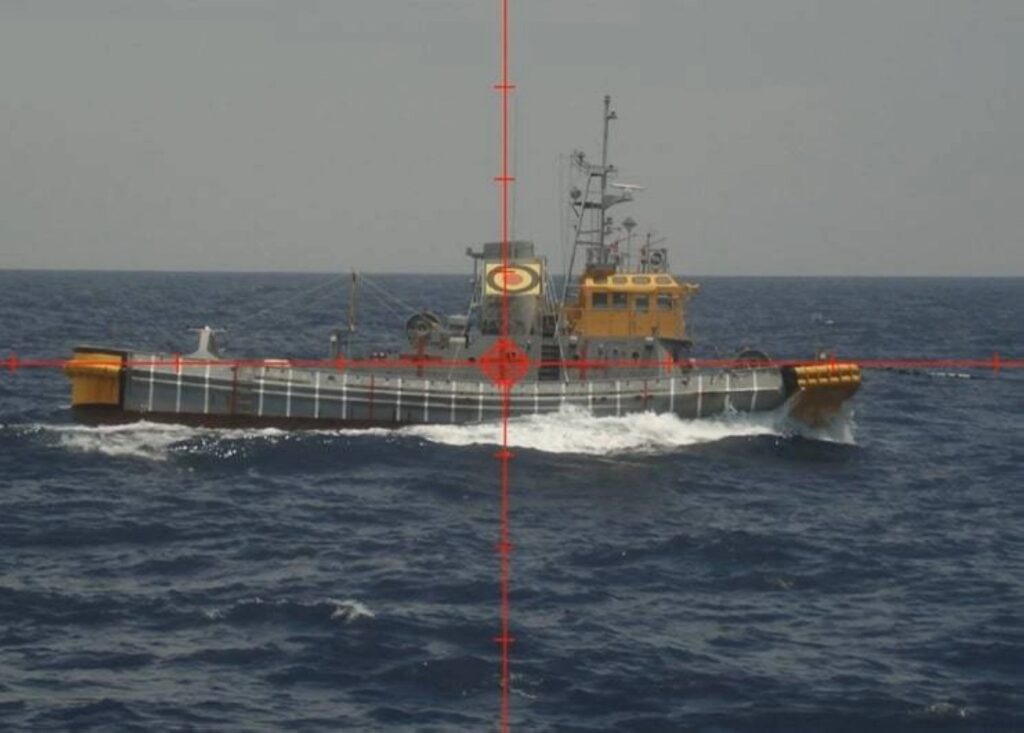A mediados del presente año, The Defense Ministry’s Acquisition, Technology & Logistics Agency (ATLA) de Japón, realizó los primeros ensayos con fuego real de su cañón electromagnético (RAILGUN) desde una plataforma de combate de la armada de ese país, disparando decenas de proyectiles sobre un buque empleando como blanco. Hace más de una década que este país avanza en el desarrollo de estas tecnologías potencialmente disruptivas, al igual que otras potencias como EEUU, China y Rusia. Los Railgun emplean energía electromagnética, para propulsar proyectiles de artillería guiados, a velocidades cercanas a Mach 7. Si bien su desarrollo impone grandes desafíos, estas tecnologías se presentan como una promisoria alternativa para potenciar las capacidades de la artillería tanto naval como terrestre, en términos de alcance, poder de fuego, precisión y la posibilidad de independizarse de materiales energéticos como las pólvoras y explosivos.
Japan has conducted its first successful test-firings of a ship-mounted electromagnetic railgun at a target vessel at sea, a feat that brings it a step closer to becoming the first nation to deploy such a next-generation weapon system.
The Ministry of Defense’s Acquisition, Technology & Logistics Agency (ATLA) revealed Wednesday that it conducted firing tests from June to early July using the prototype railgun deployed aboard the test ship JS Asuka.
“It’s the first time that a ship-mounted railgun was successfully fired at a real ship,” ATLA wrote on social media platform X, releasing a total of four images of the trials, which were carried out with support from the Maritime Self-Defense Force.
Japan’s electromagnetic railgun, first test-fired from a ship in 2023, uses electricity to launch projectiles at speeds much faster than conventional guns, thus enabling greater penetration power and longer firing ranges.
China is also believed to be rapidly advancing development of a similar cutting-edge railgun system, reportedly achieving breakthroughs such as sustained firing, but the country is not known to have deployed it operationally, with testing believed to still be underway.
The U.S. military is known to have experimented with railguns, but the navy shelved its pursuit of this weapon type in 2021 after facing major technical hurdles.
Japan’s ATLA began studying and developing railgun technology between fiscal year 2016 and 2022, with research now focusing on equipping the gun system with a series of mechanisms for actual operation.
According to Naval News, efforts are now underway to enhance the projectile’s flight stability, develop a dedicated fire-control system and establish a continuous firing capability.
The Defense Ministry in Tokyo is considering at least two intended uses for the railgun: countering hypersonic cruise missiles, which are currently very difficult to intercept, and securing a highly penetrative anti-ship capability with rapid rates of fire.

“Advanced anti-ship missiles fly at high speeds near the sea surface making them difficult to intercept with conventional, fuse-based air defense missiles,” said Masashi Murano, a Japan defense expert at the Hudson Institute think tank.
To address this challenge, several countries are working on new technologies such as railguns and directed-energy weapons to complement existing interceptor missiles and provide multilayered air defense options, he added.
At the same time, the kinetic projectiles fired from railguns are much more cost-effective compared to conventional air defense missiles, which can cost billions of yen per shot, the expert noted.
Naval News reports that research will not be limited to armor-piercing rounds, but will also extend to technologies for airburst munitions — rounds that detonate midair to disperse lethal fragments — optimized for anti-air warfare scenarios.
What is quite unique, however, is the idea of using the railgun as an anti-ship weapon.
In fact, Murano explained that one of the reasons why the U.S. canceled its naval railgun development was that the achieved effect was not sufficient to enable standoff attacks from outside the range of Chinese anti-ship missiles.
However, by using a new discharge method, materials and a smaller 40 mm caliber, ATLA has succeeded in reducing barrel wear while maintaining an initial velocity of around Mach 6.5, approximately 8,026 kilometers per hour, or 6.5 times the speed of sound, Murano said.
“As a result, even after 120 consecutive firings, no decline in muzzle velocity was observed,” he said.
However, neither the rate of rapid fire nor the maximum range of the new weapon has been disclosed.
“If the rate of fire is too low, it would not be effective for intercepting high-speed targets or for anti-ship attacks. If the range is too short — as the U.S. determined — even a cost-effective weapon would be destroyed before it could fire,” Murano said.
Japan’s research on railgun technology is not limited to naval platforms, though. Also being considered is the mounting of the weapons on land-based systems to counter enemy artillery units or as coastal defense units to engage enemy vessels.
Murano argues that while Japan’s continued development of this military technology is noteworthy, railguns will likely be most effective when integrated with existing interceptors and other systems.
“The extent of continued investment in this technology will likely be determined by balancing its role and cost against other options, such as directed-energy weapons,” he said.
Fuente: https://www.japantimes.co.jp


